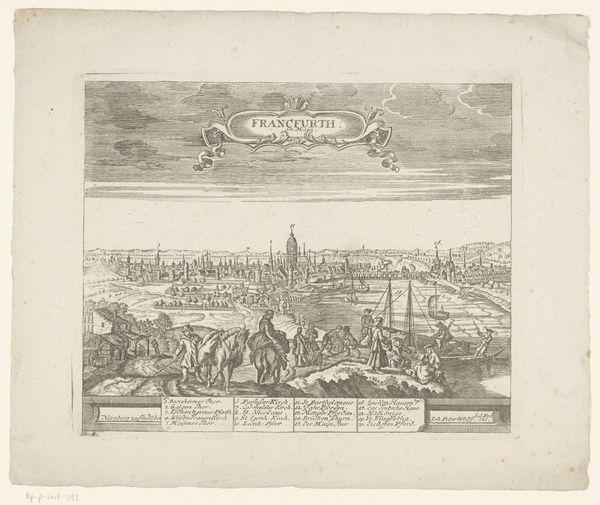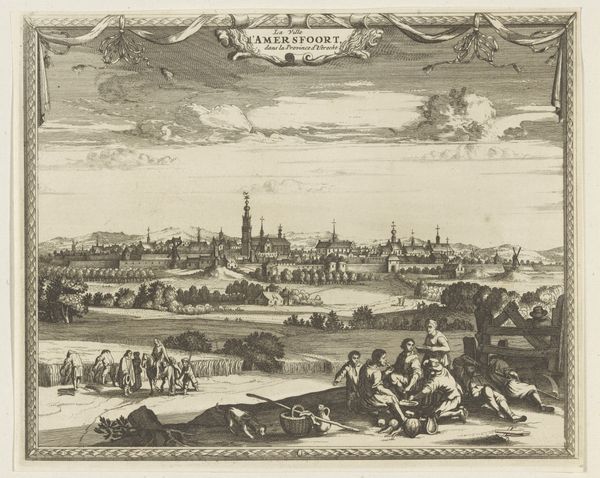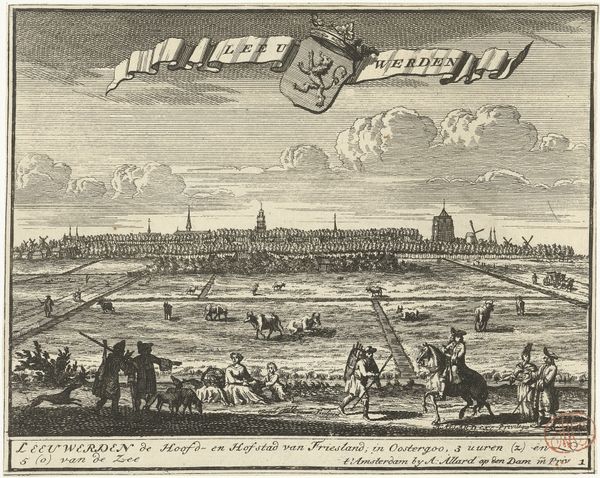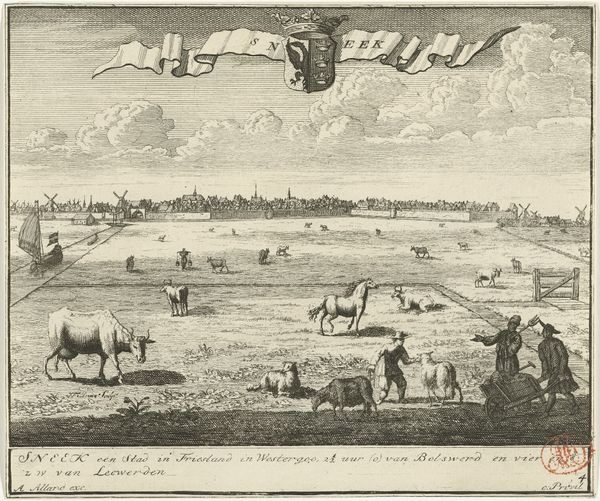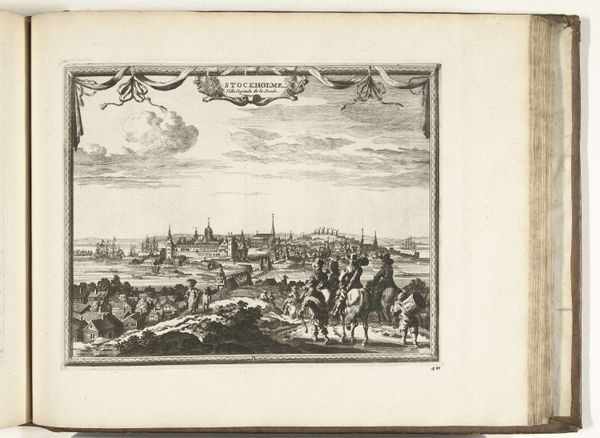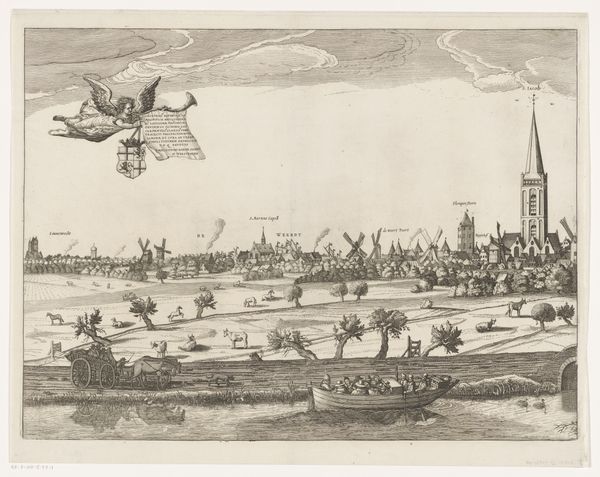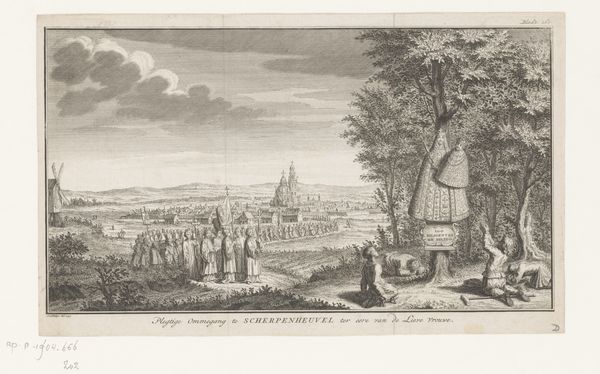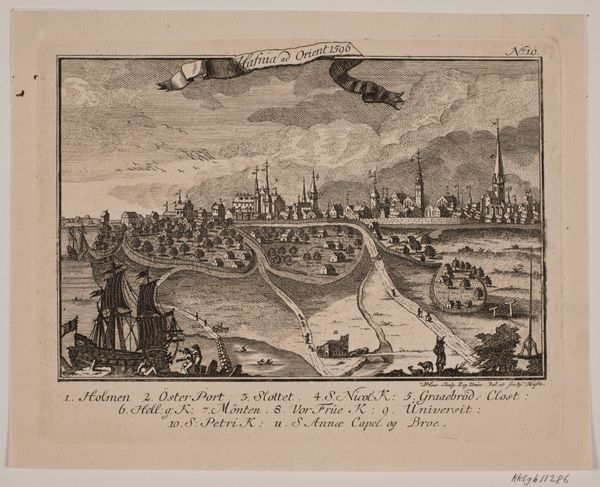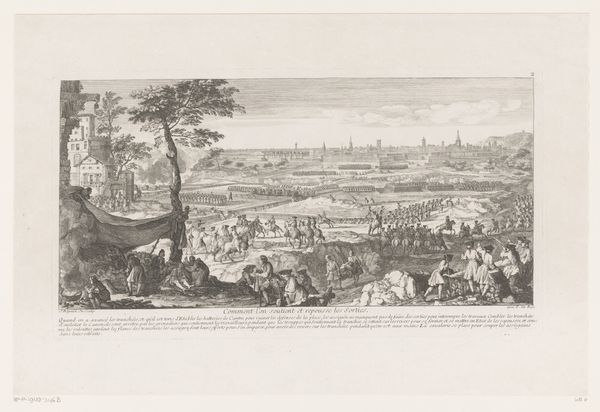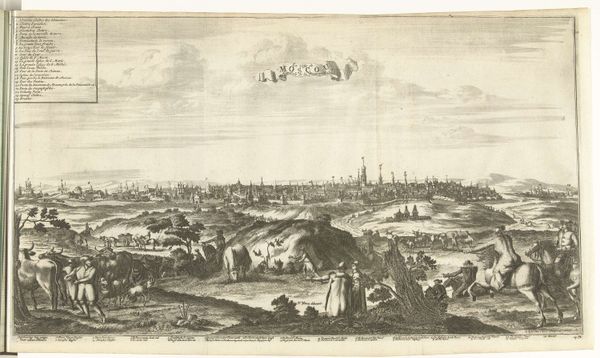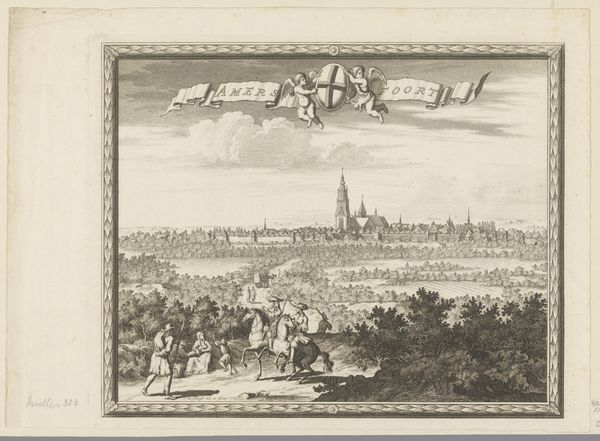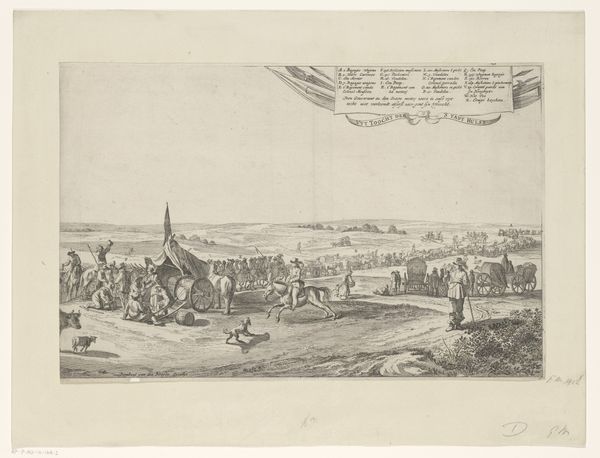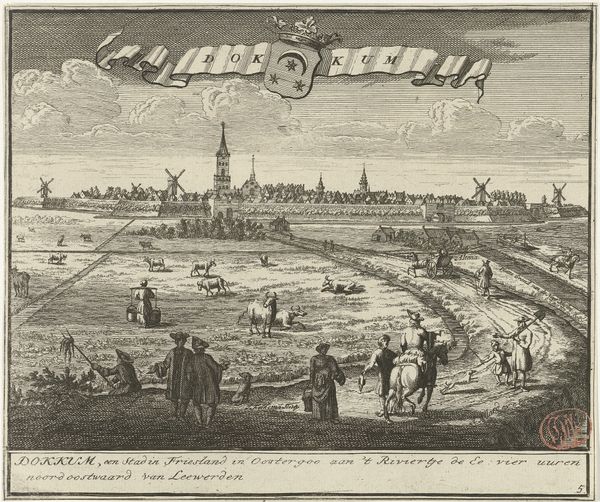
print, engraving
#
baroque
# print
#
landscape
#
cityscape
#
engraving
#
realism
Dimensions: height 247 mm, width 372 mm
Copyright: Rijks Museum: Open Domain
Curator: This is a fascinating print titled "Gezicht op Maastricht," dating back to 1715. It’s an engraving by an anonymous artist, held in the Rijksmuseum. Editor: Immediately, I'm struck by the detail! Despite being a cityscape, it feels incredibly intimate. The foreground figures give the city a sense of scale and human activity. Curator: Cityscapes such as this became increasingly popular in the 18th century, often commissioned to showcase a city’s prosperity and strategic importance. Consider the burgeoning print market and its role in disseminating such views. Editor: Yes, and those details! The central tower that dominates the skyline certainly communicates civic pride, or perhaps the power of the church. But look closer: in the foreground, everyday folk toil in the fields. There's almost a moral message, a harmony of labour and industry within sight of this important city. Curator: Absolutely. The juxtaposition of rural labor and urban development reflected the era’s economy—dependent on both. This view likely served as a symbol of Maastricht’s role as a powerful, fortified city within a thriving agricultural landscape. Editor: The fortified elements around Maastricht are interesting! City walls project control, security. But it's interesting the artist included ordinary people, it humanises the imagery by highlighting the everyday. Curator: Engravings, by their nature, allow for mass production and circulation. This view of Maastricht, like so many others from this period, helped to shape its public image—both within the city itself and further afield. The control and order are symbolic but a direct reflection of the civic powers that were! Editor: I’m intrigued by the scroll that frames 'Maastricht' above the city; a performative gesture highlighting a symbolic moment. Curator: Indeed. It signals the artist's role, as well as the market for printed works. What's your lasting impression after spending a bit of time with this piece? Editor: For me, it is the resonance of continuity - these human interactions with cities through time and how images communicate this shared experience to those in the future. And for you? Curator: It highlights the ever shifting dynamic between civic pride, power, and representation! These artworks really did serve as historical megaphones, in a way.
Comments
No comments
Be the first to comment and join the conversation on the ultimate creative platform.
